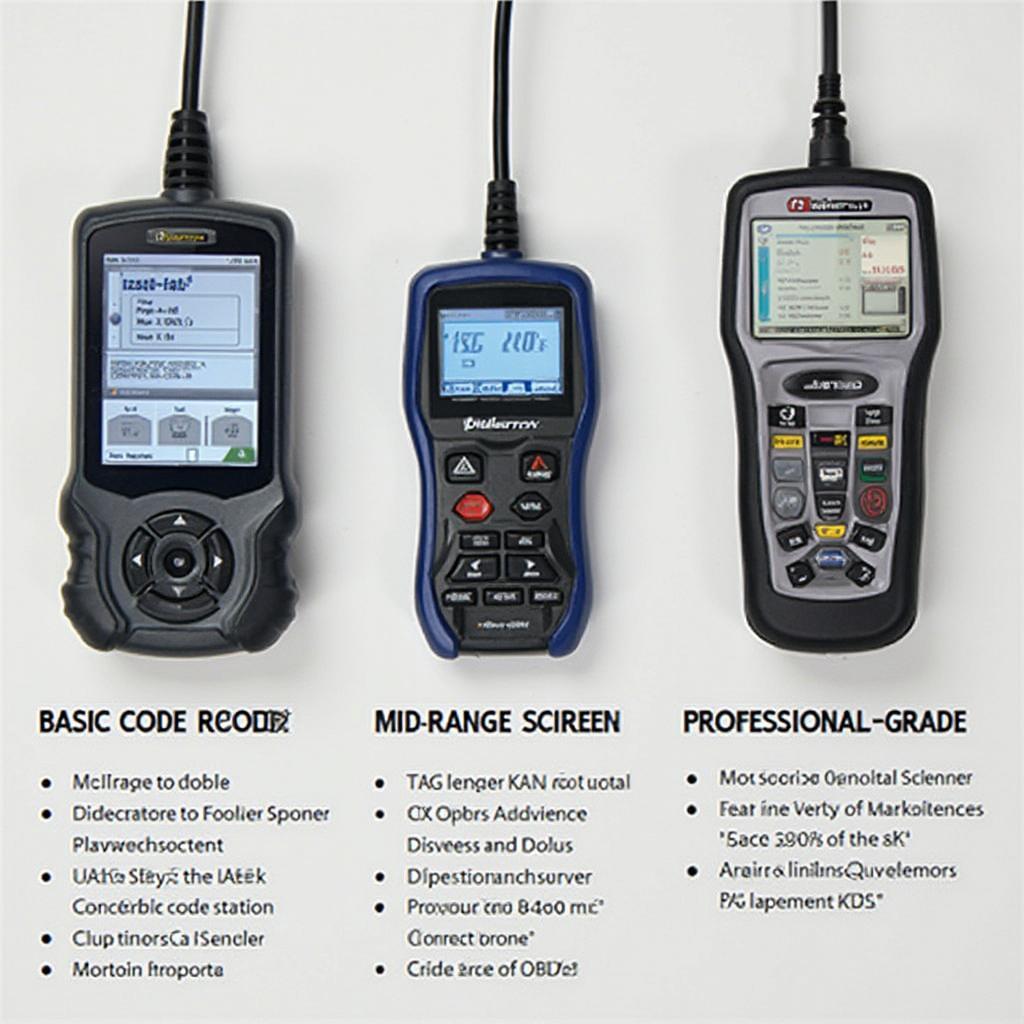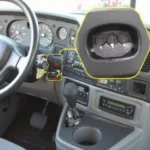Reading OBD2 codes with a scanner for your Ford vehicle is crucial for diagnosing and fixing car troubles. This guide provides a comprehensive overview of how to effectively use an OBD2 scanner on your Ford, understand the codes, and take the next steps towards resolving the issue.
Understanding OBD2 codes can save you time and money by helping you pinpoint the problem accurately. It empowers you to make informed decisions about repairs, whether you choose to do them yourself or take your Ford to a mechanic. Learn how to read OBD2 codes with a scanner for Ford vehicles and take control of your car’s health. You’ll be surprised by the valuable insights a simple scan can reveal.
Why Read OBD2 Codes on Your Ford?
Your Ford, like all modern vehicles, is equipped with an onboard diagnostic system (OBD-II). This system constantly monitors various components and systems within the car, looking for malfunctions. When a problem is detected, the OBD-II system generates a specific Diagnostic Trouble Code (DTC), commonly known as an OBD2 code. These codes are stored in the vehicle’s computer and can be accessed using an OBD2 scanner.
Reading these codes allows you to understand the nature of the problem, which can range from minor sensor issues to more serious engine or transmission problems. Early detection through OBD2 code reading can prevent further damage and costly repairs down the line.
Choosing the Right OBD2 Scanner for Your Ford
Several types of OBD2 scanners are available, ranging from basic code readers to advanced professional-grade tools. For most Ford owners, a basic code reader that can read and clear codes is sufficient. However, if you plan on performing more in-depth diagnostics or working on multiple vehicles, a more advanced scanner with features like live data streaming and ABS/SRS system diagnostics might be beneficial. Consider checking out reviews for the bluedriver bluetooth pro obd2 car scan tool.
Types of OBD2 Scanners
- Basic Code Readers: These are inexpensive and easy to use, perfect for retrieving and clearing basic OBD2 codes.
- Mid-Range Scanners: Offer additional features like live data streaming, allowing you to monitor sensor readings in real-time.
- Professional-Grade Scanners: Provide comprehensive diagnostic capabilities, including bi-directional control, allowing you to activate certain components for testing.
How to Read OBD2 Codes with Scanner Ford: A Step-by-Step Guide
- Locate the OBD2 Port: In most Ford vehicles, the OBD2 port is located under the dashboard, on the driver’s side.
- Plug in the Scanner: Insert the OBD2 scanner into the port.
- Turn on the Ignition: Turn the ignition key to the “on” position, but do not start the engine. This powers up the OBD2 system and allows the scanner to communicate with the vehicle’s computer.
- Read the Codes: Follow the instructions on your specific scanner to retrieve the stored OBD2 codes. The codes are typically displayed as a combination of letters and numbers (e.g., P0171).
- Interpret the Codes: Use a reliable online resource or a repair manual to interpret the codes. Each code corresponds to a specific problem. You might want to check out resources on how to read obd2 codes without scanner ford explorer.
- Clear the Codes: After diagnosing and fixing the problem, use the scanner to clear the stored codes.
Common OBD2 Codes in Ford Vehicles
Some OBD2 codes are more common in Ford vehicles than others. These include codes related to the evaporative emissions system (e.g., P0442), oxygen sensors (e.g., P0171), and the mass airflow sensor (e.g., P0101). Understanding these common codes can help you quickly diagnose potential issues. You might find it helpful to compare different scanner reviews, such as the bolt power obd2 engine code reader reviews.
What if my obd2 meter won’t read?
There are several reasons why your OBD2 meter might not be reading. It could be a faulty connection, a blown fuse, or even a problem with the OBD2 port itself. Troubleshooting these issues might involve checking the fuse box, inspecting the OBD2 port for damage, and ensuring the scanner is properly connected.
Conclusion
Reading OBD2 codes with a scanner for your Ford is a valuable skill for any car owner. It empowers you to understand and address potential problems early on, saving you time and money in the long run. By following this guide, you can effectively use an OBD2 scanner to diagnose your Ford, interpret the codes, and take the necessary steps to keep your vehicle running smoothly. If you’re having trouble reading codes on your older model, consider researching how to read obd2 codes without scanner 2000 ford taurus.
FAQ
- What is an OBD2 scanner? An OBD2 scanner is a device that connects to your car’s OBD2 port and retrieves diagnostic trouble codes.
- Where is the OBD2 port located in a Ford? Usually under the dashboard on the driver’s side.
- What do OBD2 codes mean? Each code represents a specific malfunction within the vehicle’s systems.
- Can I clear OBD2 codes myself? Yes, most OBD2 scanners allow you to clear the codes after fixing the problem.
- Do I need a special scanner for my Ford? While any OBD2 scanner will work, some advanced scanners offer Ford-specific features.
- What if I can’t read the codes? Check the scanner’s connection, the vehicle’s fuse box, and the OBD2 port itself.
- Where can I find more information on OBD2 codes? Online resources and repair manuals provide detailed information on specific codes.
Need help with your Ford’s diagnostics? Contact us via WhatsApp: +1(641)206-8880, Email: [email protected] or visit us at 789 Elm Street, San Francisco, CA 94102, USA. We offer 24/7 customer support.

